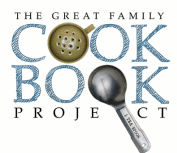Directions: |
Directions:The lemon juice in this recipe is added for flavor, as is the white wine. Both increase the acidity of the broth, which enhances the flavor of the vegetables. They’re not strictly required for safe canning, as this is a pressure canning recipe. You can use water in place of those ingredients if you choose, but I do think it’s better as it is.
As to the dry spices (thyme and black pepper), you can increase or decrease those as you see fit. You can also add in other dry spices that suit your tastes.
Do not increase the total quantity of vegetables, but you can omit some if they’re not to your family’s tastes. If you don’t like mushrooms, you can skip them.
You can swap out some of the vegetables if you choose, but make sure you maintain the same ratios of vegetables to other ingredients for canning safety.
You want to make sure that the jars are loosely packed, so have a kettle of water (or extra broth on hand) to top the jars with more liquid if you run short.
This recipe from Ball Canning is well-measured though, and it should fill the jars just right.
(If you omit something, you may need extra water to make up the space difference in the jars.)
Any cut of chicken may be used, but chicken breast tends to offer the most flavor and the best texture. Chicken thighs also work really well, and have a slightly richer flavor.
Commercial canned or boxed chicken broth or stock or Vegetable broths or other types of broths will also work. anything you have on hand.
As with any pressure canning recipe, the vegetables must be peeled before canning.
This helps with the quality of the finished dish, as the peels tend to fall off and toughen during canning. But, more importantly, it also removes the outer layer of root vegetables, which have the highest concentration of potentially problematic bacteria.
Potatoes and carrots are always peeled for pressure-canning recipes.
Start by chopping the vegetables.
You can use whatever shape you’d like, but aim for uniform-sized pieces so everything cooks evenly.
Personally, I think a medium dice of cubes makes for the best-finished presentation.
Next, assemble the rest of your prepared ingredients.
This includes diced boneless chicken, white wine, and broth, along with spices.
Melt the butter in a Dutch oven or saucepan over medium heat.
Add the mushrooms and onions, then saute until the mushrooms are lightly browned (about three minutes).
Add the carrots, potatoes, and celery, again, sauteeing until golden brown, or for about two minutes.
Stir in the stock, and then add the white wine, thyme, salt, pepper, and bay leaf.
Bring to a boil, then reduce heat to medium and cook uncovered for about 10 minutes, or until the vegetables are tender. Stir occasionally.
Remove from heat, then stir in the peas, chicken, and lemon juice. Once the chicken is cooked through, remove the bay leaf and take the pan off the heat.
Ladle the mixture into hot jars, leaving 1″ (2.5 centimeters) of headspace.
Use the air bubble tool to remove any bubbles, then make sure adequate headspace remains.
Sometimes debubbling jars lowers the level inside the jar substantially. Adjust headspace if necessary to maintain 1” from the rim.
Wipe the rims of the jars to remove any food particles.
Apply the bands and lids, then adjust to fingertip tight.
Repeat until all jars are filled, then load each jar into your canner.
Put the lid on the canner and turn to the locked position, but do not seal the canner yet.
Adjust the heat to medium-high and allow the steam to vent for 10 minutes.
Put the counterweight or weighted gauge on the vent (depending on the manufacturer’s instructions), then bring the pressure to 10 lbs for a weighted-gauge canner or 11 lbs pressure for a dial-gauge canner.
Process pint jars for one hour and 15 minutes (75 minutes total).
When the time has finished, turn off the heat, then allow the canner to return on its own to zero pressure.
Let the canner sit for five more minutes before removing the lid. Cool the jars in the canner for another 10 minutes, then use a jar lifter to remove them from the canner.
Allow the jars to cool on the counter for 12 hours. Check the seals, and store any unsealed jars in the refrigerator for immediate use.
Properly canned and sealed jars will maintain peak quality on the pantry shelf for 12 to 18 months.
Refrigerate after opening. |
Personal
Notes: |
Personal
Notes: serving tips
To serve it as a soup, simply reheat it upon opening the jars, either on the stovetop or in the microwave.
If you’d like to enjoy it as a chicken pot pie, preheat the oven to 400 degrees Fahrenheit (200 degrees Celsius).
Strain the broth from the jars, reserving some of the broth off to the side. Melt two tablespoons of butter in a skillet over medium heat, stirring in two tablespoons (30 ml) of flour as a thickener.
Cook this mixture, stirring regularly, until golden brown. Add the reserved broth, continuing to stir, until the mixture is smooth and thickened. Stir in the strained chicken mixture, then remove from the heat.
Place a pie crust on the bottom of the pan. Pour the filling on top, then add an additional pie crust. Tuck the edges under and crimp with a fork.
Cut slits in the top of the pie so steam can escape, then bake for 20 minutes at 400 degrees Fahrenheit (200 Celsius), or until the crust is golden and the filling is bubbly.
|

 This recipe for CHICKEN POT PIE FILLING is from
This recipe for CHICKEN POT PIE FILLING is from